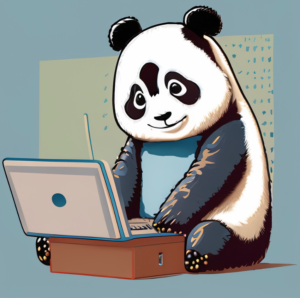
As summer draws to a close, it’s time for public relations students to transition from relaxation mode to academic mode. Think of it as preparing for the Olympics: each new school year is an event where preparation, strategy and endurance are key to success. To help you get ready, here are six tips inspired by some of our favorite 2024 Olympic moments and athletes:
1. Perfect Your Craft Like Tom the Knitting Diver
Tom Daley, the British diver, is known not only for his incredible dives but also for his knitting hobby, which he uses to stay calm and focused. As you return to college, take a page from Tom’s book and find a way to sharpen your PR skills while staying relaxed. This could be through practicing writing, researching the latest PR trends, or even starting a blog. Just like Tom’s intricate knitting patterns, your preparation will help you craft a successful semester.
2. Stay Ready Like “Bob the Cap Catcher”
In the swimming world, “Bob the Cap Catcher” is the unsung hero who’s always on standby to retrieve caps that go astray. Similarly, planning your semester is all about being prepared for anything. Create a detailed calendar that includes class schedules, deadlines for assignments, and any extracurricular activities. This way, you’re ready to catch anything unexpected that comes your way, just like Bob catches those stray swim caps.
3. Balance Your Act Like Steven Nedoroscik
Steven Nedoroscik, the pommel horse specialist, exemplifies balance and precision in his routines. Your study space should reflect the same qualities. Whether you prefer studying in a quiet corner of the library or your dorm room, make sure your space is organized and conducive to focus. A well-balanced and orderly environment, much like Steven’s routines, can help you perform at your best academically.
4. Show Resilience Like Simone Biles
Simone Biles, known for her exceptional skills, also showed remarkable resilience by prioritizing her mental health during the previous Olympics. As you navigate the academic pressures of the new semester, remember that it’s okay to prioritize your well-being. Whether it’s taking a mental health day, talking to a counselor, or simply practicing self-care, resilience is about knowing when to step back and take care of yourself, just as Simone did.
5. Consistent Excellence Like Katie Ledecky
Katie Ledecky’s consistency and excellence in swimming are unmatched. She prepares rigorously and sticks to her routines, which is key to her success. Similarly, staying consistent with your studies and professional development is crucial. Set a routine that includes regular study sessions, keeping up with industry news, and engaging in PR-related activities. Just like Katie trains consistently, your steady efforts will build a strong foundation for success.
6. Be a Team Player, On and Off the Field
The Olympics are as much about teamwork as they are about individual achievements. As you return to campus, engage with your peers, professors, and mentors. Participate in study groups, join PR-related organizations, and attend networking events. Building strong relationships can provide support, new perspectives, and opportunities, much like how Olympic teams support each other.
Just like training for the Olympics, preparing for a new academic year requires dedication, planning, and a positive mindset. By refining your skills, staying organized, balancing your environment, showing resilience, maintaining consistency, and being a team player, you set yourself up for a successful semester in public relations. Here’s to making this year as inspiring and rewarding as watching the best athletes in the world compete!
And here’s a question for you
How can you use your unique skills and interests, much like Tom Daley’s knitting, to stand out and bring creativity to your PR projects and studies?

NOTES
The framework of this article was inspired by ChatGPT. The image was created by DALL-E.












